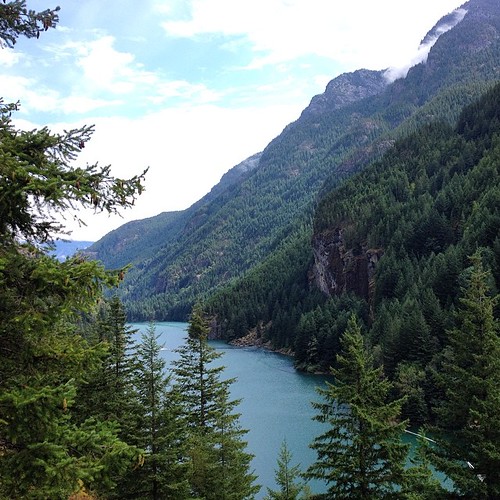North Cascades National Park is the least visited park in the continental United States, with fewer than 25,000 visitors per year. This number is minuscule compared to 9.4 million visitors the Great Smoky Mountains or the 3 million nearby Olympic National Park receive annually. I suspect, as was the case for myself, few people outside of the Pacific Northwest even know this place exists. Indeed, it seems that the North Cascades has bit of a public relations problem. While iconic images of its better known cousins are splashed across travel magazines, featured in documentaries, and make it on the bucket lists of millions, the North Cascades stand waiting for a few adventurers to embrace its solitude, wilderness, and beauty.


I noticed this National Park on a map while doing some travel planning for our return trip east from the Olympic Peninsula. “Hey, there is National Park, we should check it out,” I said and agreed too. Having recently gazed at Crater Lake and toured Olympic National Park, very satisfied but less than inspired by these experiences, the North Cascades caught us unaware and triggered a sense of awe.



The North Cascades are sometimes referred to as the American Alps. This relatively young mountain chain is still growing due to a curiously small tectonic plate sub-ducting locally and is still being sculpted by glaciers. Broad U-shaped valleys and gorges, indicative of glacier carving, slope gently upward to meet jagged, craggy mountain tops. Below are rivers and streams being fed by glaciers in dramatic fashion by cascading waterfalls. In between are meadows filled with wild flowers bursting with color, all punctuated with turquoise lakes that draw the eye and reflect the surrounding beauty.



This Wilderness Park is a hiker’s paradise. Easily accessible trail heads quickly and strenuously take hikers above the tree-line to what can be described as an alpine wonderland. Here, the vistas offer a wide assortment of geologic formations and biologic features that make this one of the most beautiful places in the world. This park is a little different than other National Parks; the emphasis is on wilderness, not serving as a drive through amusement park. There are some places and view points that tease observers of its beauty, but to truly experience its grandeur, one must hit the trails and get above the tree-line. This effort is heartily rewarded with stunning scenery. Perhaps it is because visitors must work for the experience that visitation is low, or vice-versa. Whatever the case may be, this is a wonderful departure from bustling visitor centers, crowded observations points, heavily trafficked road ways and congested parking lots filled with people stepping out just to snap picture. Even on a weekend in August at the height of peak season, solitude is easy to find. In this park, the cars are stationary as people are either moving by foot, paddle or peddle. For us, the 7.5 mile Maple Pass trail loop is our new favorite trail.



